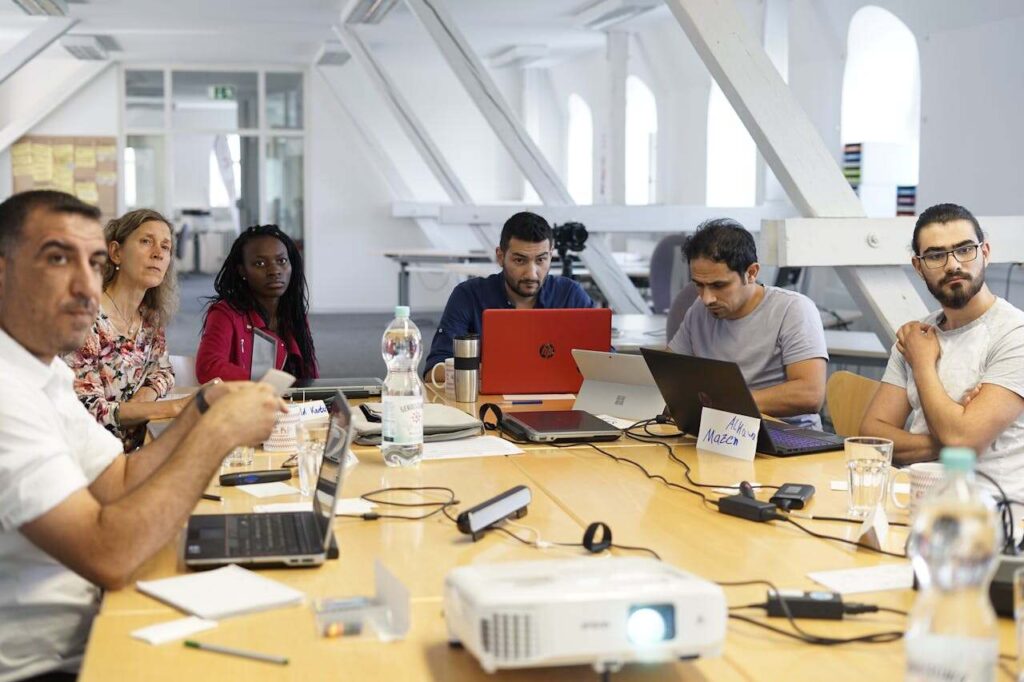Seed stage can feel like the most exciting—and most confusing—part of building a startup.
You’re not just writing code. You’re building a business. And every decision starts to carry weight. What you say, who you hire, how you spend your time—it all starts to matter more.
But what actually counts as progress at this stage?
That’s what this guide is for.
It’s not about checkboxes or vanity goals. It’s about real milestones. The kind that move your company forward. The kind that help you raise money, build trust, and stay focused.
Let’s break them down, one by one.
Start With the Problem, Not the Product
Clarity on the Problem Sets the Foundation

Before anything else—before hiring, before building—you need to deeply understand the problem you’re solving.
This means more than identifying a market. It means being able to explain the pain clearly, simply, and in human terms. Why is this problem urgent? Who feels it the most? What happens if it’s not fixed?
Investors want to see that you’re solving something real. Customers want to feel like you understand them better than they understand themselves. And your early team needs to know what they’re waking up every day to fix.
Founders who nail this early often move faster, hire better, and fundraise with more confidence.
Talk to the Right People—Then Listen
Don’t just talk to your friends or people who are polite. Go straight to the users who feel the pain.
Ask open questions. Don’t pitch. Just listen.
You’ll know you’re on the right track when people start saying, “If you built this, we’d try it.” That kind of feedback is gold. It’s not product validation yet—but it’s proof you’re solving something that matters.
And at this stage, that kind of signal can be even more powerful than revenue.
Design the Simplest Version That Proves Your Idea
Your First Version Should Be Built to Learn
Founders often overbuild at the start. They think their MVP needs to be beautiful, fast, and feature-rich.
But a strong MVP isn’t built for scale—it’s built for learning. It should be the simplest version of your idea that lets you answer a key question: does this solve the problem?
If it does, great. If not, you know early—and can adapt fast.
This mindset keeps you focused. It helps you avoid building the wrong thing. And it shows investors that you’re disciplined.
Because seed-stage success isn’t about speed. It’s about direction.
Early Users Are Worth More Than Many Features
Once you have something working, even if it’s rough, try it with real users.
Watch what they do. Ask what they expected. Learn what they ignored, misunderstood, or misused.
That feedback is gold. Not just for the product—but for your story. It helps you raise money with real examples. Not hypotheticals.
When you say, “Here’s what we built. Here’s what happened. Here’s what we’re doing next,” it shows that you’re not guessing. You’re building with intention.
Prove There’s a Market Before You Try to Scale
Traction Is More Than Just Growth
At the seed stage, traction doesn’t always mean revenue. What investors really want to see is signal. Are real people interested? Are they using it? Are they coming back? Are they asking questions that show they care?
This doesn’t have to be a chart going up and to the right. In fact, some of the strongest signals are qualitative at first. A user who sends detailed feedback. A company that wants to pilot. A conversation that ends with “Can we try this?”
These moments are early but powerful. They’re evidence that you’re building in the right direction. And they’re often the first real signs that your product is solving something meaningful.
Rather than trying to chase scale, double down on learning from these early signs. They’re often more valuable than a dozen lukewarm signups.
The Best Growth Is Pull, Not Push
When users ask to share your product, or when teams start using it in ways you didn’t expect, that’s pull. That’s when your idea starts spreading on its own.
It usually starts small. A customer invites a teammate. A CTO forwards your blog post. A design partner brings you into a strategy meeting.
You can’t force this. But you can create space for it. Make it easy for people to invite others. Let them contribute ideas. Show them you’re listening.
This kind of early momentum tells investors more than any paid marketing campaign ever could. It shows that you’re building something that people feel invested in.
And if you can show that in your seed round, it becomes a core part of your story.
Build Around a Moat Early—Even If It’s Invisible
What Makes You Hard to Copy Is Worth More Than What Makes You Flashy

One of the most overlooked milestones at seed stage is defensibility. Most founders think about this too late—once they’ve raised, once they’ve launched, or once competitors start showing up.
But investors who back technical founders want to see you thinking about this early. They want to know: what gives you an edge that lasts?
This doesn’t mean patents in every case. Sometimes it’s proprietary data. Sometimes it’s a unique model or process. Other times it’s something harder to quantify—like user behavior you’ve shaped or a novel insight baked into your architecture.
The point isn’t to make your moat visible. It’s to start building it before anyone else knows it’s there.
When you bring this into the room early, you flip the conversation from “What are you building?” to “How is this going to last?”
And that’s the kind of shift that gets investors to move from curious to committed.
IP Is a Strategic Advantage, Not Just a Legal Box
If you’re building in AI, robotics, or deep tech, your tech isn’t just a product—it’s a core part of your company’s value.
That’s why protecting it isn’t just smart, it’s strategic.
Filing a patent early shows that you’re not just building fast—you’re building to last. It tells investors that you’re creating something that others can’t easily replicate.
Even a provisional filing can change the tone of a meeting. It shows that you’re thinking long-term. That you’re not rushing to launch—you’re playing a bigger game.
At Tran.vc, we invest in startups by helping them build that moat early—offering up to $50,000 in in-kind IP support before a seed round. Because a strong IP foundation does more than protect your work. It makes your startup easier to believe in.
Show You Can Hire, Lead, and Keep Momentum
A Founder Who Can Rally Talent Stands Out Fast
Even at seed stage, investors are asking a simple question: can this founder attract great people?
You don’t need a full team yet. But you do need signs that you can bring in the right kind of help, even before funding. Maybe it’s a technical advisor who gives you time every week. Maybe it’s a part-time contributor who believes in the mission. Maybe it’s someone who turned down better-paying work to build with you.
These small signals add up.
They show investors you’re not just convincing on paper—you’re convincing in real life.
Because if someone’s willing to work with you before the money shows up, that’s a strong vote of confidence.
It also signals something deeper: that you’re not building alone.
Teams Built Around Focus Move Faster
At this stage, the size of the team doesn’t matter as much as the alignment. Are you all building toward the same goal? Is everyone clear on what matters most this quarter?
A few people, working with focus and clarity, can often outpace a larger, distracted team.
This is why clarity around milestones is so important. It’s not just about what you want to hit next. It’s about helping your team move in the same direction—without burning out or chasing distractions.
When investors see a small team shipping consistently, learning quickly, and staying focused on the core—it’s one of the strongest signals they can get.
That kind of execution becomes a story in itself. And that story is often what gets the round raised.
Keep the Momentum Alive With Updates That Build Trust
Progress Is a Story—Tell It in Real Time

One of the most overlooked seed-stage tools is the investor update.
Even if you’re not raising yet. Even if you’re not sure anyone’s reading. Sending regular, clear updates is one of the simplest ways to stay top of mind.
And it’s not just about communication—it’s about building trust.
When you send updates every month or two, and they show progress—even small wins—it tells potential backers that you’re consistent. You’re focused. You’re delivering.
It also builds a narrative they can follow. Instead of seeing a pitch out of nowhere, they’ve seen the work. They’ve seen the thinking evolve. They’ve seen the company take shape.
And that makes it a lot easier to say yes when you finally ask.
Use Updates to Show Learning, Not Just Wins
Founders often worry about looking “small” in their updates. They think they need big wins every time. But what matters more is showing you’re learning.
Did a test fail? Talk about it. Did a feature fall flat? Explain what it taught you. Did a conversation with a customer change your roadmap? Say how.
Investors respect transparency far more than spin. Because it signals maturity. It shows that you’re not just looking for praise—you’re trying to build something real.
Make Every Signal Count—Even the Quiet Ones
Quiet Signals Often Speak the Loudest to Investors
Most founders chase obvious signals—growth charts, logos, big announcements. But experienced seed investors are trained to look deeper. They’re not just looking at what you did. They’re paying attention to how you’re thinking, who’s paying attention, and how fast things are compounding.
That’s why even subtle signs can carry real weight.
Did a respected advisor offer to help—without you asking? Did a potential partner start checking in regularly? Did a cold email lead to a high-caliber customer conversation?
These moments may not feel like milestones. But when presented with context, they tell a bigger story. They show you’re creating gravitational pull. That your idea is resonating beyond your immediate circle.
These aren’t just “good vibes.” They’re the beginning of momentum.
Capture them. Track them. And when the time comes to raise, thread them into your narrative. They show that you’re not just working on something—but working in a way that attracts belief.
Document the Dots, Even If You’re Not Connecting Them Yet
As you build, keep a lightweight record of what’s happening—not for investors, but for yourself. Write down customer feedback, ideas that got validated, quick quotes from user calls, surprise reactions from experts, or emails that made you rethink something.
This running log becomes a living narrative. It helps you connect cause and effect: how an insight turned into a product decision, or how a customer comment reshaped your roadmap.
Later, this becomes gold during fundraising. You won’t just be pitching a vision. You’ll be telling a true story—with receipts. And that kind of storytelling makes early-stage companies feel real before they’re big.
Founders who document their build process tend to fundraise better—because they have more than opinions. They have patterns.
Build Depth, Not Just Activity
Focus Is More Convincing Than Volume
At the seed stage, it’s easy to confuse activity with progress. You’re shipping updates. Taking calls. Posting updates. But investors aren’t counting how many things you’ve done. They’re listening for one thing: what matters most, and how fast are you moving toward it?
This is where clarity becomes a superpower.
Can you tell me, in a few sentences, what your core assumption is—and how you’re testing it this quarter?
Can you explain how your product decisions tie back to the problem you’re solving?
Can you describe, with precision, why a customer said no—and what you’re doing about it?
Founders who can answer those questions don’t look early. They look ready.
And when you lead with focus instead of noise, you stand out immediately.
Show You Know What Not to Build (Yet)
Knowing what to delay is as important as knowing what to launch.
Investors respect founders who say, “We considered adding this feature, but we’re holding off until we validate X.” Or, “We’re intentionally not optimizing for scale until this signal is clear.”
This kind of thinking shows discipline. It shows you’re building a company, not just a product. And it reassures investors that their capital won’t go toward chasing every shiny object.
Seed-stage success comes from making a few good decisions in a row. And one of the best decisions is to say no to things that don’t move the core forward—yet.
When you communicate that restraint, you demonstrate maturity far beyond your stage.
Design Your Learning Process Like a Growth Engine
The Speed of Learning Beats the Speed of Building
Early-stage execution isn’t about building fast—it’s about learning fast.
That means every milestone should be tied to a question you need to answer. Not just, “Can we ship it?” but, “Will people use it?” Not just, “Can we charge for it?” but, “Will they come back?”
Set up your roadmap like a learning machine.
After each build cycle, step back. What did we expect? What actually happened? What changed in our thinking? What’s the next most important unknown?
When you operate this way, you build smarter. You learn faster. You avoid expensive mistakes. And when you sit down with investors, your roadmap isn’t just a set of features—it’s a series of clear, evidence-backed decisions.
And that’s rare.
Because most early-stage founders are still guessing. But you’ll be building with confidence, backed by learnings. That kind of learning velocity is often more convincing than any revenue line at this stage.
Capture Learning in Ways You Can Share
One of the best habits you can build is documenting and summarizing what you’re learning—not just for yourself, but for others.
Maybe it’s a quick teardown of a failed feature. Maybe it’s a brief explanation of how you validated pricing. Maybe it’s a five-bullet note after every customer conversation.
When you make this part of your workflow, it becomes much easier to turn raw experience into insight—and to turn insight into trust.
These summaries become assets. You can drop them into updates. Use them in investor meetings. Share them with advisors. They make you sound not just busy, but thoughtful.
And they signal that you’re not stumbling your way forward. You’re learning your way forward.
That’s the founder investors want to back.
Get Ready for the Raise Before You Start Asking
Milestones Are More Than Checkpoints—They Create Leverage

A lot of founders think fundraising begins when they open the round. But in reality, it starts long before that—when you begin building the story investors will bet on.
Each milestone you hit—whether it’s a working prototype, an IP filing, a successful pilot, or even just a sharp insight—adds weight to that story.
These milestones aren’t just proof points. They’re moments that change your leverage. They shift your posture from “we’re hoping to raise” to “we’re already building, and here’s what comes next.”
The best fundraises often feel like they write themselves. That’s because the work was already done—through consistent, clear progress. Through signals that were shared over time. Through a build-first, raise-second mindset.
When you approach fundraising this way, you’re not pitching in a vacuum. You’re picking up a conversation you’ve been leading for months.
Don’t Just “Check the Boxes”—Build With Intention
Milestones only matter if they’re connected. Too many founders try to hit goals they think will impress investors: a certain number of signups, a launch announcement, a one-pager that looks sleek.
But that’s noise if it doesn’t tie to your core story.
Before you spend time on a demo, ask: does this prove we’re solving the right problem? Before chasing growth, ask: are we learning from these users? Before filing a patent, ask: does this protect what really makes us different?
It’s easy to stay busy. But being intentional is what makes seed-stage progress real.
Because seed investors aren’t just betting on what you’ve done—they’re betting on why you’re doing it, and how you’ll build what comes next.
Prepare Your Story Like You Prepare Your Product
When it’s finally time to raise, don’t just pull together a deck over the weekend.
Use everything you’ve built—your insights, your early traction, your advisors, your clarity—to shape a story that flows.
This isn’t about dressing things up. It’s about helping investors feel why the work matters. It’s about connecting the dots you’ve already drawn—through your updates, your roadmap, your product signals, your user feedback, and your IP.
Done right, your pitch won’t feel like a pitch at all. It’ll feel like the next step in a clear and compelling journey.
And that’s what gets checks written.
At Tran.vc, We Help You Build the Right Milestones First
Founders don’t need fluff. They need focus.
At Tran.vc, we work with technical teams at the earliest stages—before traction, before product-market fit, sometimes even before a full product. We help you identify the milestones that actually matter, and we help you build them right.
That means investing up to $50,000 in in-kind IP strategy and patent filings to make your startup harder to copy—and easier to fund. It means building your moat before the market even sees you. And it means crafting your story around real signals, not just slides.
If you’re building something real in AI, robotics, or deep tech and want to raise with leverage—not luck—we’d love to hear from you.
Apply now to work with Tran.vc
And let’s build something investors can’t ignore.
